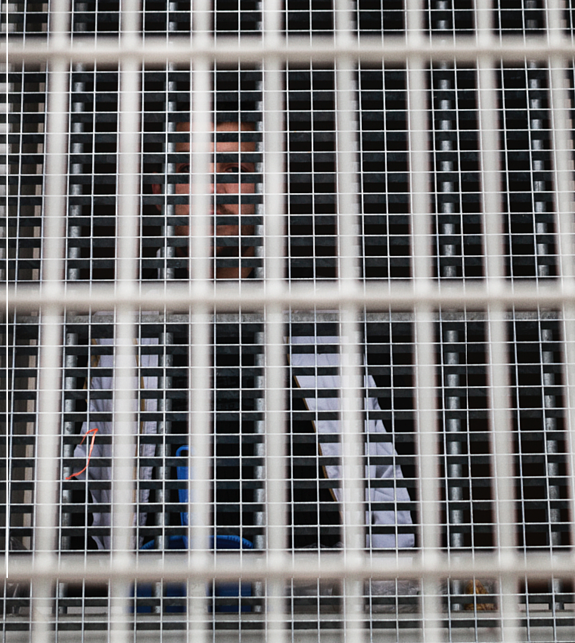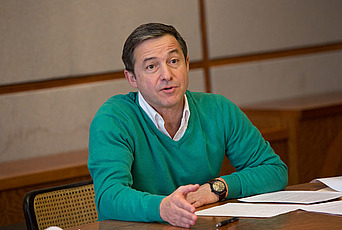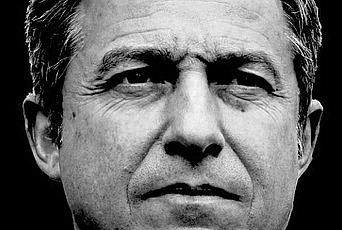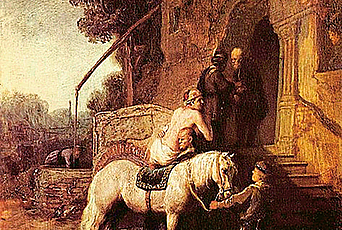Presented by its promoters two and a half centuries ago as a moral progress in the administration of punishment, prison has become over the past decades one of the most vexing and unsettling issues in Western societies for both the spectacular increase of its population and the grim reality of its facilities. But while imprisonment is today in most countries the ineluctable reference and the ultimate horizon of the penal system, until recently neither its efficacy in reducing crime nor its adequacy with democratic principles had been seriously discussed beyond some academic circles. The correctional institution has been taken for granted and hardly made visible. An elephant in the room, it has largely been ignored by the public. To take the most extreme example, in the United States, the number of people incarcerated increased more than sevenfold in four decades, reaching the impressive figure of 2.3 million inmates in the early 2010s, which made the country’s incarceration rate the highest in the world, yet without provoking a major debate. New laws were constantly passed, imposing new mandatory minimum sentencing and criminalizing new offenses. New facilities were steadily built, involving new private actors and new security measures. An ever-tougher legislation and an expanding correctional system were business as usual in government and these widely popular policies were little questioned. Only in recent years has the problem begun being addressed, in large part because of the colossal share it represents in the states’ budgets. The political, moral, and social implications of mass incarceration have remained for the most part in the background.
In fact, what prisons entail involves two separate, albeit related, aspects: penal and correctional––how offenders are punished and how incarceration is conducted. Studying the penal system involves analyzing how problems are socially constructed, how the public emotionally reacts to particular events, how some crimes are deemed serious and others are not, how the executive and the legislator produce norms and laws, how the police use their discretionary power to focus on specific offenses or offenders, how prosecutors and judges decide to indict and sentence certain acts while ignoring others. In the end, it is this entire complex process that leads to filling or emptying prisons, and determines the composition of their population. Studying the correctional system implies examining the infrastructure and functioning of its facilities, the recruitment, training, activity, and supervision of its personnel, the rights and obligations that inmates are supposed to have, the daily interactions among those who are confined and with those who guard them, the formal and informal modes of regulating, settling, and sanctioning the various issues that may arise. Indeed, it is this dense network of material and immaterial elements that defines what life in prison looks like for those who serve a sentence as well as for those who work there.
Both the investigation of the penal chain and the inquiry into the correctional apparatus are indispensable to fully understand the prison system. However, they represent distinct challenges for social scientists since the former, being open, is much more accessible to direct observation and other scientific approaches than the latter, which is, by definition, closed. This explains why most research is carried out on the penal chain while little knowledge is available about the correctional apparatus. This is particularly true in the United States, where an impressive sum of sociological, historical, and legal studies exists on the logics and mechanisms that have led to the phenomenon known as mass incarceration but where what it means to be incarcerated for the millions of individuals who enter prisons and jails each year is hardly studied. Indeed, the Federal Bureau of Prisons, most of the fifty State Departments of Corrections, and the three thousand local jails have maintained a high degree of opacity regarding what goes on in their facilities, restricting both scientific activities and external assessment, and therefore avoiding public or legal accountability about how prisoners are treated. It is much less the case, however, in other countries such as Britain where observational methods and interview techniques have recently produced substantial works on prison.
In France, in contrast, the penal chain and correctional apparatus are relatively open to outsiders’ gaze. The Ministry of Justice, which is in charge of both, has its own small research unit, as does the National School of Prison Administration, and it finances the main public research center in criminology. Social scientists and legal scholars are regularly solicited to conduct surveys on various aspects of the justice and prison systems, notably to evaluate new policies or respond to specific questions, but independently conceived projects can also be granted permission, which has given birth to a growing field of research on justice and prison. Prison Worlds is a testimony of this relative opening.
Over four years, I have been able to spend time, day and night, for a total of seven months in the short-stay facility of an important urban area. Such an institution is in principle reserved for pretrial detainees, whose proportion has recently increased to almost one-third of the population, and convicted individuals sentenced to less than two years, although some inmates may remain for five years or more. During my research, I have gradually been authorized and have progressively authorized myself to be present in all parts of the facility and attend all sorts of its activities, from cultural programs to parole board meetings, from disciplinary hearings to the solitary confinement unit. It has logically been more difficult to gain the trust of the prisoners than that of the personnel, and probably also to have sufficient confidence in myself to sit with the former in their cells than to stay with the latter in the walkways. But however fascinating life in such a facility may be and however demanding its observation may become, I have repeatedly tried to step outside, on the one hand to study the everyday work of the justice system in the district criminal court, and on the other hand to examine the considerable body of legal, administrative, and statistical documents on the evolution of punishment practices, in order to apprehend the processes that had led the prison system to be what it is. The book is thus an attempt to analyze both the penal chain and the correctional apparatus. It aims at characterizing the punitive moment through which French society as many others is going, and at comprehending the carceral condition as it is experienced by those who endure it.
France has today the highest number of prisoners of its history in peacetime. Its incarceration rate is 100 per 100,000 inhabitants, still seven times less than the United States. In the past six decades, there has been more than a threefold increase in the prison population, which has swelled from 20,000 in 1955 to 70,000 in 2016. One could logically imagine the reason for this evolution to be a rise in crime. Such is not the case, however. Although the curve of crime statistics is always difficult to interpret since it is influenced by the way offenses are represented in the public sphere and constituted under the law as well as by the activity of the police and the decisions of the judges, for the most robust data available which also corresponds to the most serious crime, namely homicides, the trend over the past century and a half is clearly of decline, except for a short period in the 1970s when a moderate increase was observed. In fact, the dramatic expansion of the prison population is the consequence of a more severe penal system.
This repressive turn results from two main phenomena. First, new offenses have been criminalized. Driving without a license, for instance, was until the 1990s a rare violation of traffic laws usually sanctioned by a fine. In the following decade, with the creation of a penalty point system and the multiplication of radars on the roads, the number of suspended licenses has skyrocketed, while a 2004 law has made it an offense punishable by a one-year prison sentence. Today, driving with a suspended license is the cause of one new incarceration out of ten. Second, for a given breach of the law, prison sentences have been passed more frequently and for longer periods. Most notably, a 2007 law establishing mandatory minimum sentencing for recidivists has contributed to an increase of 9 percent in prison sentences and 17 percent in time to be served during the following five years. But when one closely examines these statistics, it appears that, paradoxically, the smaller the offense the greater the escalation in harshness. Other factors have also played a role, in particular the growing use of immediate appearance trials, which has a prison sentencing rate twice that of the normal procedure, and the activation of prison sentences for minor offenses perpetrated several years earlier for which probation was in progress. In sum, an increase in harshness rather than a rise in crime caused the expansion of the prison population. French society was undergoing a punitive moment.
This repressive trend being what it is, two further questions need to be asked. Is it justly allocated? Is it fairly distributed? In other words, are the crimes that cause more damage to society the most severely sanctioned (justice), and is the same offense punished in the same manner across society (fairness)? Ample discussion of these two points is provided in the book, and I will therefore limit the answers to an illustration: drug law violations. In terms of justice, suffice it to say that in the 2000s the number of convictions for use of marijuana has more than tripled, as a result of the establishment of quota of arrests by the police, while for economic crime it has decreased by one-third, after the introduction of legal measures rendering the indictments for such law infringements more difficult. Few would argue that smoking a substance that is legal in certain countries might be more prejudicial to society than embezzling public money. Currently, in France, imprisonment sentences for drug law violations represent one incarceration out of seven, essentially for possession and resale of cannabis, with one-fourth of these violations corresponding to mere use. In terms of fairness, while epidemiological surveys show that marijuana consumption is widely distributed among the youth, being even slightly more frequent in the middle-class, those sentenced to imprisonment only belong to disadvantaged groups and ethnoracial minorities. The main reason for this discrepancy is that law enforcement officers concentrate their activity in housing projects rather than around universities and use socioracial profiling to decide whom to stop and search. As a consequence, in French prisons, half of the prisoners are unemployed, half of them declare to have no profession, four out of five have not finished high school, and in the short-stay facility where I conducted my research, three-fourth of the inmates belonged to ethnoracial minorities, being mostly black and Arab men. The unjust and unfair allocation of punishment explains in good part the formidable disparities observed in the French correctional institution. In this respect, it should be noted that the expansion of the prison population with its socioracial component occurred at the very moment when socioeconomic inequalities started to deepen after a long period of contraction and when ethnoracial minorities became the target of stigmatization campaigns from right-wing parties. The penal state has definitely been a way of governing the poor.
With this analysis in mind, it is possible to enter the prison system itself and better apprehend the way it operates. Indeed, it is not enough to wonder how contemporary societies have come to incarcerate so many people with such a disproportionate representation of the most disadvantaged and discriminated categories. One has to ask: what does it imply to be confined in a French prison today? Guards often say that the only thing of which prisoners are deprived is their freedom, and this belief has been at the heart of the very idea of the prison since its inception. Judges even maintain that the so-called incarceration shock may be salutary for the person convicted in the sense that it allows him to realize the consequence of his act. Yet, were freedom the only deprivation endured and the incarceration shock actually salutary, French correctional facilities might not have the highest suicide rate in the European Union, twice that of comparable countries such as Germany or Britain and five times what it was half a century ago. While the reasons for this suicide epidemic are unclear, it suggests that what inmates lack in prison is not just liberty. It is also privacy in their shared cell; an affective and sexual life with the constraints imposed on their rare visitors; the possibility to make decisions on ordinary needs like taking a medicine when in pain; the right to express emotions like anger when facing frustrations. What they are deprived of is their dignity, as they are subjected to body searches, and fair treatment, when they are sanctioned for misdeeds that the administration knows they have not committed. What the incarceration shock implies can be the loss of their job with the anticipated difficulty of finding another one, the disruption of their marital, family, and social life, and the exposition to violent encounters and criminal networks. At the end of the four years I devoted to studying prison life, the most obvious conclusion I could draw was that, contrary to the common idea that the prison system is expanding like an archipelago beyond its walls, something remains irreducible in the carceral condition.
For the social scientist, and probably for the public as well, the question that then comes to mind is: what is prison life like under this carceral condition in France? Much of my ethnographic work has been an attempt to provide an answer to this question. Beyond the deprivations and the shock, beyond the drastic security measures and the harsh conditions of confinement, what is the experience of the prison for both personnel and prisoners? As one gets progressively immersed into the correctional system, whether as a new inmate, a novice officer, or a scholar, one becomes aware of much more complex relationships and arrangements between the multiple agents and within the various contexts than what one could have thought. The imagined total institution appears as a field of forces where the rules are permanently tested, negotiated, and diverted by guards as well as inmates. Of course, these rules are defined by the prison staff; certain officers do misuse them; all ultimately enforce them strictly and even brutally in the event of conflicts. In other words, power is unevenly distributed and some abuse it. Yet, in the daily life of the facility, compromises permanently occur: a shower is authorized although it is not supposed to be, an inmate back from a visit is left for a while in the walkway instead of being locked up, an officer accepts to serve as intermediary to pass unlawfully tobacco or coffee from one cell to another. These adjustments are deemed to contribute to keeping the peace within the prison for the evident benefit of all. But they also reveal the existence, within limits steadily iterated by everyone, of mutual respect acquired through months and years of cohabitation.
The institution plays an important role in the production of this internal order. The threat of sanctions, which affects not only the stay in prison but also the time served and the possibility of parole, definitely counts. However, after having been publicly criticized at the turn of the century, and so as to conform with the European Prison Rules, the correctional system has undergone important transformations, both material and organizational, such as the improvement of the environment in the admissions unit or the presence of a lawyer during disciplinary hearings. A person familiar with the correctional apparatus in the United States would certainly be surprised to discover that French inmates are incited to vote rather than being disenfranchised, and cannot be submitted to solitary confinement more than thirty days instead of having no maximum duration, whereas reciprocally, an observer of the French prison system would undoubtedly be astounded to learn that in the United States inmates may be shackled or controlled by pepper spray, and guards can beat up a prisoner and even kill him without being sanctioned by their institution or indicted by a prosecutor. National contexts differ. They matter. They influence legal guarantees, institutional regulations, and professional ethos.
Yet, beyond these differences that are certainly crucial for those who spend months or years behind bars, one question is of universal relevance: that of the sense and function of the prison. It can be formulated in philosophical terms but it has to be examined on an empirical basis. A common justification of the prison is utilitarian: it reduces crime via incapacitation, deterrence, and rehabilitation. For short-term sentences, which represent in France the great majority, with four out of five being less than one year, this justification is difficult to argue since studies show that recidivism is higher after an incarceration than when an alternative penalty is given. Indeed, the destructuring of family and professional life is not compensated by efforts towards reinsertion during prison time, the stay being too short to provide useful activities and plan re-entry under supervision. The months spent in prison are experienced as vainly lost: no work, no class, no sports, and no social work undertaken. Imprisonment reveals the naked truth of its sole meaning: the retribution of a wrong as a form of socialized vengeance. However, even if one accepts this justification, according to which the suffering inflicted on the person convicted must be commensurate with the injury to the victim or the damage to society, could one argue that smoking marijuana, driving with a suspended license, even stealing a cellphone is worth being incarcerated for months, even years?
In a time when in France the new president has announced his project to build more correctional facilities and in the United States the new administration requires more severe prison sentencing from federal prosecutors, one cannot not pose the question of the raison d’être of a punishment system that aggravates both insecurity and inequality in contemporary society.



